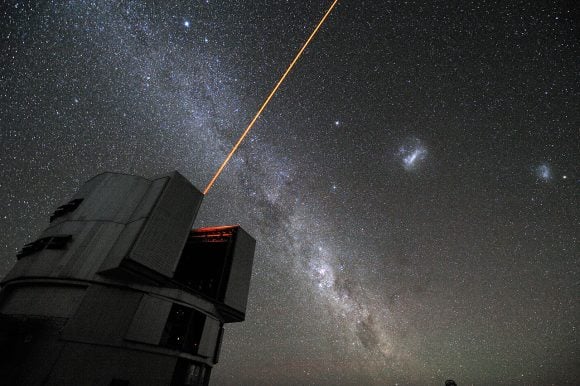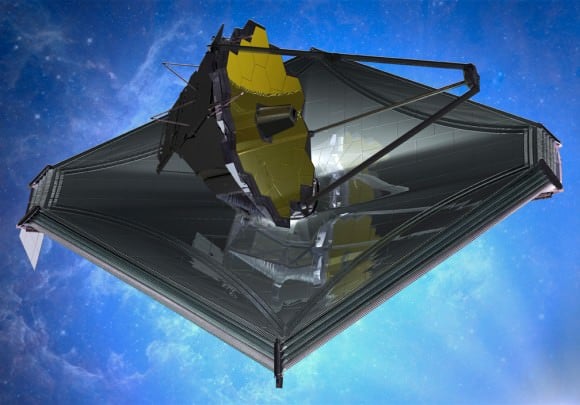The Fermi Paradox essentially states that given the age of the Universe, and the sheer number of stars in it, there really ought to be evidence of intelligent life out there. This argument is based in part on the fact that there is a large gap between the age of the Universe (13.8 billion years) and the age of our Solar System (4.5 billion years ago). Surely, in that intervening 9.3 billion years, life has had plenty of time to evolve in other star system!
However, new theoretical work performed by researchers from the Harvard-Smithsonian Center for Astrophysics (CfA) offers a different take on Fermi's Paradox. According to their study, which will appear soon in the *Journal of Cosmology and Astrophysics*, they argue that life as we know it may have been a bit premature to the whole "intelligence party", at least from a cosmological perspective.
For the sake of their study, titled " Relative Likelihood for Life as a Function of Cosmic Time ", the team calculated the likelihood of Earth-like planets forming within our Universe, starting from when the first stars formed (30 million years after the Big Bang) and continuing into the distant future. What they found was, barring any unforeseen restrictions, life as we know is determined by the mass of a star.
As Avi Loeb - a scientist with the Harvard-Smithsonian Center for Astrophysics and the lead author on the paper - explained in a CfA press release:
"If you ask, 'When is life most likely to emerge?' you might naively say, 'Now'. But we find that the chance of life grows much higher in the distant future. So then you may ask, why aren't we living in the future next to a low-mass star? One possibility is we're premature. Another possibility is that the environment around a low-mass star is hazardous to life."
Essentially, higher-mass stars - i.e. those that have three or more times the mass of our Sun - have a shorter life-span, which means that they will likely die before life has a chance to form on a planet orbiting them. Lower mass stars, which are a class of red dwarfs that have 0.1 Solar masses, have much longer lifespans, with some astrophysical models indicating that they may stay in their main sequence phase for six to twelve trillion years.
In other words, the probability of life existing in our Universe grows over time. For the sake of their study, Loeb and his colleagues concluded that certain red dwarfs that are in their main sequence today could likely live for another 10 trillion years. By this time, the probability that life will have developed on some of their planets increased by a factor of 1000 over what it is today.
Hence, we could say that life as we know it - i.e. carbon-based organisms that evolved on Earth over the course of billions of years - emerged early in terms of cosmic history, rather than late. This might explain why it is that we haven't found any evidence of intelligent life yet - maybe it just hasn't had enough time to emerge. It's certainly a better prospect than the possibility that they were killed off during the early phases of their star's evolution (as other researchers have suggested).
However, as Dr. Loeb explained, the team also determined that there was an alternative to this hypothesis, which has to do with the particular risks faced by plants that form around low-mass stars. For instance, low-mass stars emit strong flares of UV radiation in their early life, which could adversely effect any planet orbiting it by stripping away its atmosphere.
So, in addition to life being premature on Earth, its possible that life on other planets is being wiped out before they have a chance to reach maturity. Ultimately, the only way to know for sure which possibility is correct is to continue hunting for Earth-like exoplanets and conducting spectroscopic searches of their atmospheres for biosignatures.
In this respect, missions like the Transiting Exoplanet Survey Satellite (TESS) and the James Webb Space Telescope will have their work cut out for them! Loeb also published a similar study titled " On the Habitability of Our Universe " as a preface for an upcoming book on the subject.
The Harvard-Smithsonian Center for Astrophysics, located in Cambridge, Massachusetts, is a joint collaboration between the Smithsonian Astrophysical Observatory and the Harvard College Observatory. It's scientists are dedicating to studying the origin, evolution and future of the universe.
Further Reading: CFA*, arXiv*
 Universe Today
Universe Today


